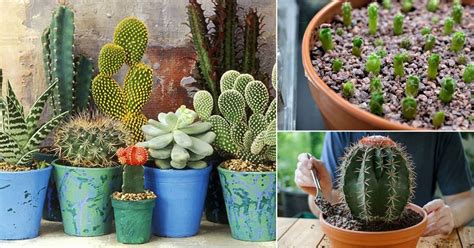Grow Cacti Indoors: A Guide to Seed Propagation
Growing cacti indoors offers a rewarding experience for plant enthusiasts. These resilient succulents thrive in containers, adding a touch of the desert to any home. While cuttings are a common propagation method, seed propagation provides a unique journey, allowing you to nurture cacti from their very beginning. This guide delves into the intricacies of growing cacti indoors from seed, covering everything from seed selection to successful transplanting.
Choosing the Right Cactus Seeds
The success of your indoor cactus propagation heavily relies on selecting high-quality seeds. Opt for seeds from reputable suppliers specializing in cacti and succulents. Look for seeds that are clearly labeled with the species name and ideally, information about germination rates. Fresh seeds generally have higher germination rates than older ones. Avoid seeds that look damaged or discolored.
Preparing for Germination: Sowing Your Seeds
What type of soil is best for growing cacti from seeds?
The ideal soil mix for cactus seeds is well-draining and sterile to prevent fungal growth, a common problem with seedlings. A blend of seed-starting mix, perlite, and coarse sand in roughly equal parts is excellent. Sterilizing the soil mix before use by baking it in the oven at a low temperature (around 200°F for 30 minutes) further reduces the risk of contamination.
What containers are best suited for cactus seed propagation?
Small, clear plastic containers with lids are perfect for germinating cactus seeds. The transparency allows for easy monitoring of moisture levels, and the lid helps to maintain humidity, crucial for germination. Ensure the containers have drainage holes to prevent waterlogging. Alternatively, you can use seed trays with individual cells.
How to sow cactus seeds?
Gently sow the seeds onto the prepared soil surface, spacing them evenly. Avoid burying them deeply; a light dusting of soil or vermiculite is sufficient. Lightly mist the soil with warm water using a spray bottle to avoid dislodging the tiny seeds. Place the lid on the container or cover the tray with plastic wrap to maintain high humidity.
Creating the Ideal Growing Environment
What is the ideal temperature for germinating cactus seeds?
Most cactus seeds germinate best at temperatures between 70-80°F (21-27°C). A consistently warm environment is essential; consider using a heat mat to maintain the optimal temperature, especially during colder months.
How much light do cactus seedlings need?
While seedlings initially require indirect light to avoid scorching, they gradually need increasing amounts of bright, indirect light as they grow. Avoid direct sunlight, which can quickly dehydrate and damage delicate seedlings. A south-facing window with a sheer curtain can provide an excellent environment.
How often should I water my cactus seedlings?
Watering is crucial but requires careful management. Keep the soil consistently moist but not soggy. Overwatering is a major cause of seedling death. Water sparingly, allowing the soil surface to dry slightly between waterings. Use a spray bottle for gentle watering to prevent washing away the seeds or seedlings.
Caring for Your Seedlings
As your cactus seedlings mature, they will need repotting into individual containers. Once they develop a few true leaves, they are ready to be carefully transplanted into small pots filled with a well-draining cactus potting mix. Continue to provide consistent warmth, bright indirect light, and careful watering.
Common Problems and Troubleshooting
Why aren't my cactus seeds germinating?
Several factors can hinder germination. Old or damaged seeds, improper watering, incorrect temperature, or insufficient light are the most common culprits. Check that your growing conditions meet the requirements outlined above.
Why are my cactus seedlings dying?
Seedling death is often caused by overwatering, fungal infections, or insufficient light. Ensure good drainage, sterile soil, and adequate, but not excessive, watering. If fungal infections are suspected, you might need to treat them with a fungicide.
By following these guidelines, you can successfully propagate cacti indoors from seed and enjoy the rewarding experience of watching these desert dwellers thrive under your care. Remember, patience and attention to detail are key to success in cactus seed propagation.

